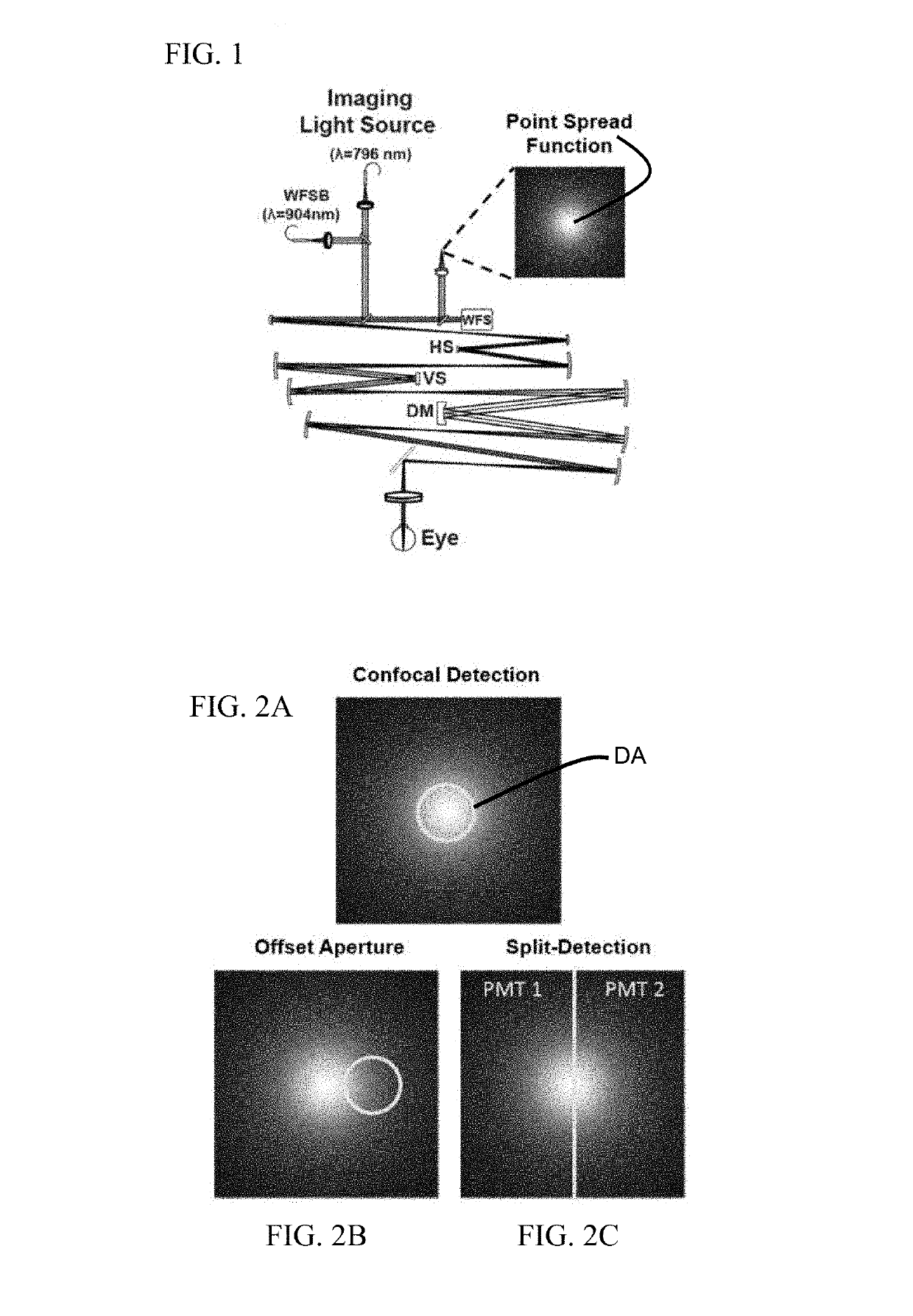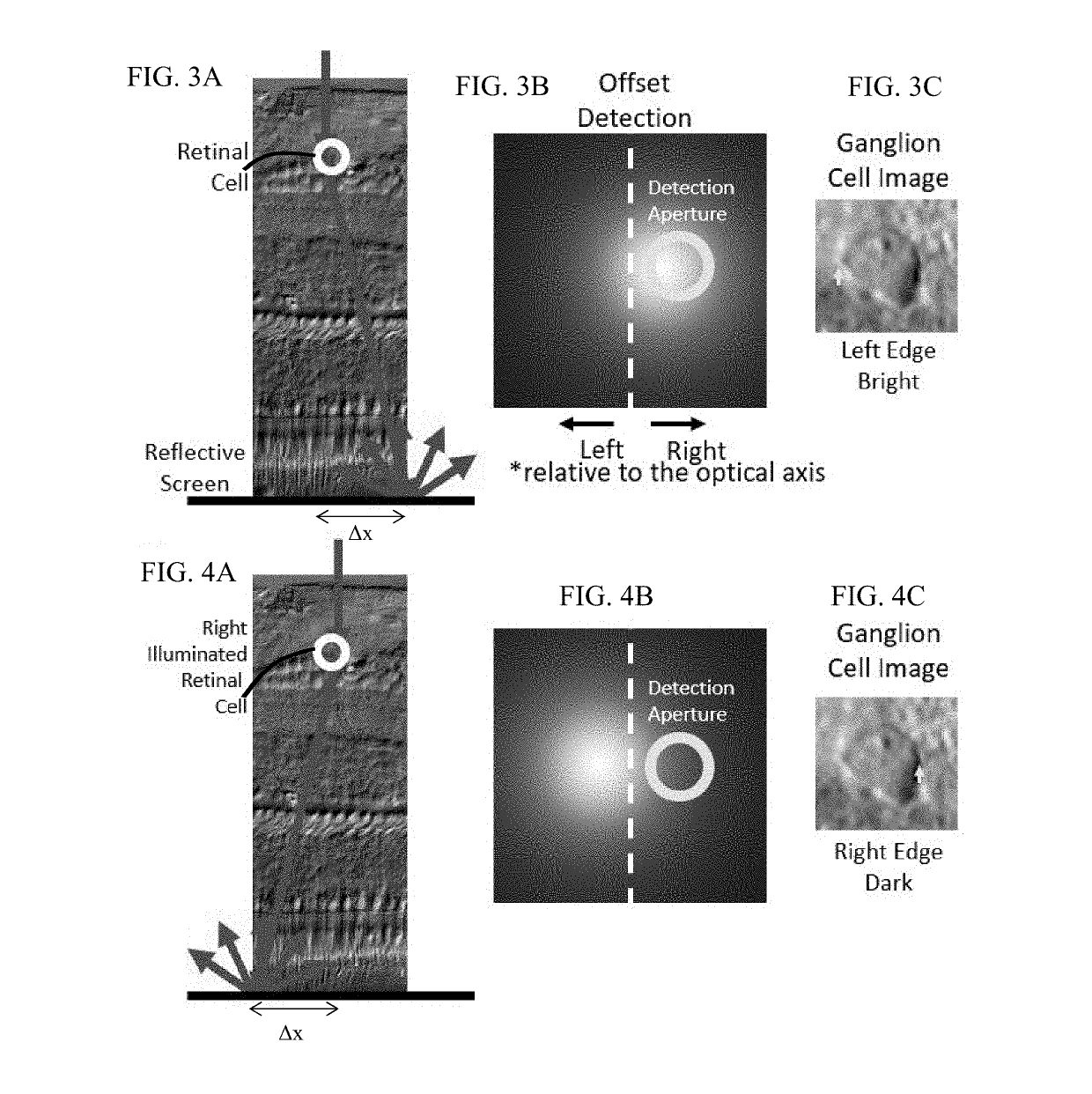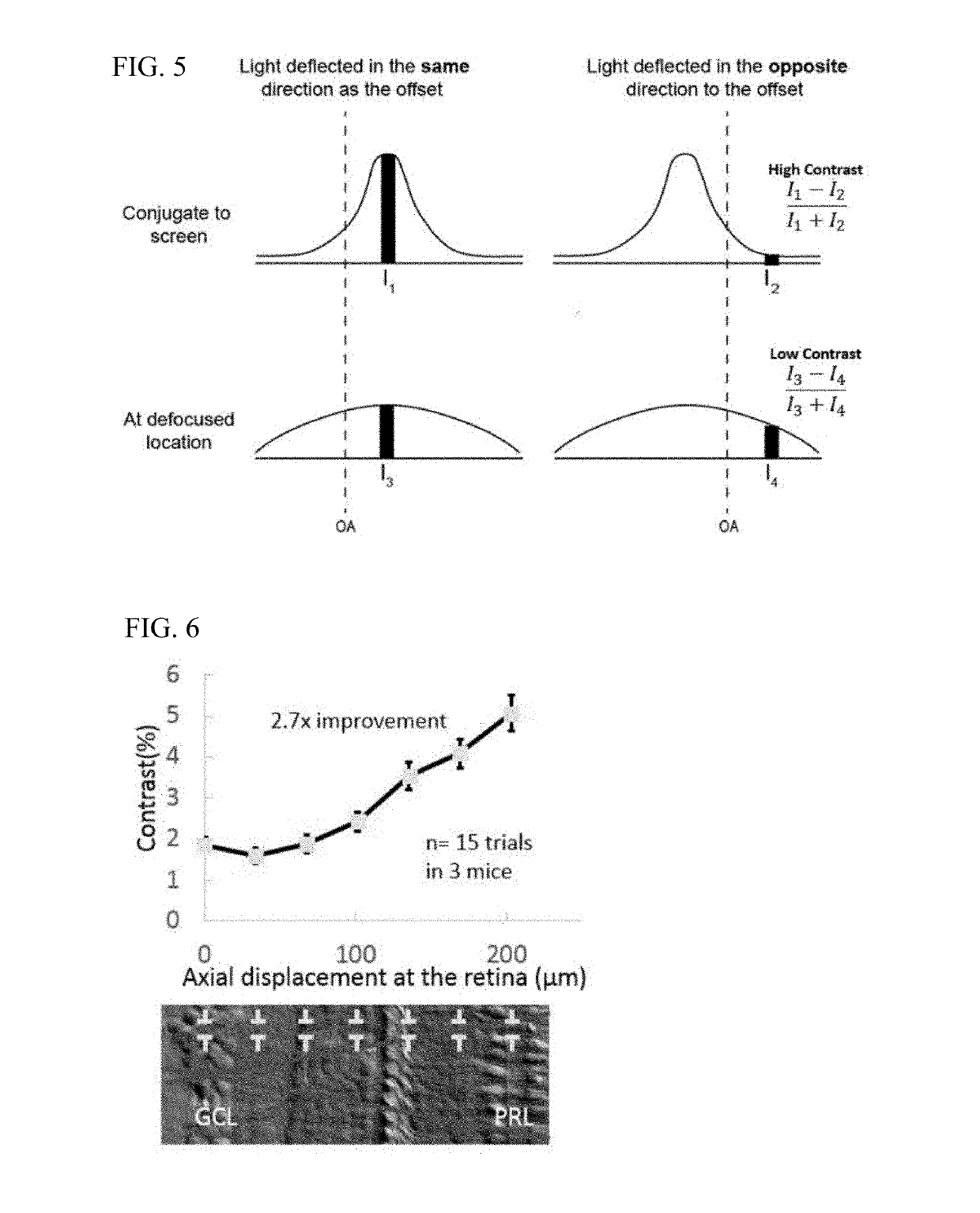Label-free contrast enhancement for translucent cell imaging by purposefully displacing the detector
a technology of translucent cells and label-free enhancement, applied in the field of retinal imaging, can solve the problems of limited basic science and clinical investigation, lack of cellular contrast in ophthalmic imaging, and inability to fully understand the source of contrast, so as to achieve the effect of optimizing contrast and improving non-invasive imaging
- Summary
- Abstract
- Description
- Claims
- Application Information
AI Technical Summary
Benefits of technology
Problems solved by technology
Method used
Image
Examples
Embodiment Construction
[0016]With non-confocal, off-axis detection imaging methods such as offset aperture and split detector techniques, several studies have demonstrated new classes of cells that can be identified using safe-levels of near infrared light. Among the new capabilities provided by these studies are imaging blood vessel wall, individual red blood cells, photoreceptor inner segments, photoreceptor somas, horizontal cells and ganglion cells. Previous models of light scatter provide a partial description of contrast mechanisms. In work by Elsner et al. and further refined by Chui and colleagues referenced above, authors provide a schematic of how light is scattered in offset aperture detection suggesting that light is forward scattered and then reflected by a deeper screen in what they call multiply scattered light. While this model provides an understanding that light interactions in the retina are complex, there is no developed optical model that describes the nature of the asymmetry in the c...
PUM
 Login to View More
Login to View More Abstract
Description
Claims
Application Information
 Login to View More
Login to View More - R&D
- Intellectual Property
- Life Sciences
- Materials
- Tech Scout
- Unparalleled Data Quality
- Higher Quality Content
- 60% Fewer Hallucinations
Browse by: Latest US Patents, China's latest patents, Technical Efficacy Thesaurus, Application Domain, Technology Topic, Popular Technical Reports.
© 2025 PatSnap. All rights reserved.Legal|Privacy policy|Modern Slavery Act Transparency Statement|Sitemap|About US| Contact US: help@patsnap.com



